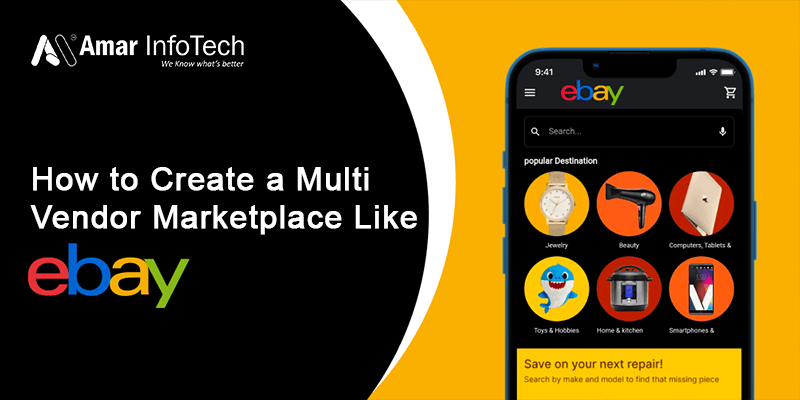Ready for Digital Transformation? Your Vision, Our Expertise - Let’s Build Innovative Software Together!
How to Create a Multi-Vendor Marketplace Like eBay
 Blog Build Apps Like
Blog Build Apps Like
The rise of e-commerce has opened up new business opportunities, and multi-vendor marketplaces like eBay have become incredibly popular. These platforms allow multiple sellers to list and sell their products while providing buyers with a diverse range of options. If you’re looking to create a similar marketplace, this guide will walk you through the essential steps.
1. Understanding the Multi-Vendor Marketplace Model
A multi-vendor marketplace enables multiple sellers to register, list their products, and manage orders, while the platform owner earns revenue through commissions, subscriptions, or transaction fees. Successful marketplaces like eBay focus on usability, security, and scalability to ensure a seamless experience for both buyers and sellers.
2. Key Features of a Multi-Vendor Marketplace
To build a robust marketplace, you need to integrate essential features, including:
- User Registration & Profiles: Allow buyers and sellers to create accounts and manage their activities.
- Product Listings & Categories: Provide an easy way for sellers to add products with descriptions, images, and pricing.
- Secure Payment Gateway: Enable secure transactions with multiple payment options like credit/debit cards, PayPal, or cryptocurrency.
- Order & Inventory Management: Help sellers track their stock and fulfill orders efficiently.
- Reviews & Ratings: Allow customers to review and rate products and sellers.
- Shipping & Logistics Integration: Offer multiple shipping options and real-time tracking.
- Admin Dashboard: Provide the marketplace owner with insights, analytics, and control over the platform.
3. Choosing the Right Technology Stack
Your platform’s success depends on selecting the right technology stack. Some popular choices include:
- Front-end Development: React, Angular, Vue.js
- Back-end Development: Node.js, Python (Django), PHP (Laravel)
- Database: MySQL, PostgreSQL, MongoDB
- Payment Integration: Stripe, PayPal, Razorpay
- Cloud Hosting: AWS, Google Cloud, DigitalOcean
Alternatively, you can use marketplace solutions like Shopify, Magento, or WooCommerce for faster deployment.
4. Designing an Intuitive UI/UX
A seamless user experience is critical for retaining customers. Focus on:
- Simple navigation
- Mobile responsiveness
- Fast page load speed
- Clear product categorization
5. Setting Up Secure Payment Processing
A secure and diverse payment system is essential. Consider integrating:
- Payment gateways (PayPal, Stripe, Square, etc.)
- Escrow services to hold funds until order completion
- Multi-currency support for global reach
6. Implementing Seller and Buyer Policies
Define clear policies on:
- Product listing guidelines
- Refund and return procedures
- Dispute resolution mechanisms
7. Marketing and SEO Strategy
Driving traffic to your marketplace requires strong marketing efforts:
- SEO Optimization: Use relevant keywords, meta descriptions, and structured content.
- Social Media Marketing: Leverage Facebook, Instagram, and LinkedIn.
- Paid Advertising: Run Google Ads and social media campaigns.
- Email Marketing: Keep users engaged with offers, newsletters, and personalized recommendations.
8. Launching and Scaling Your Marketplace
Once your marketplace is ready:
- Perform beta testing to identify and fix bugs.
- Onboard initial sellers to populate your platform.
- Offer discounts or promotions to attract early buyers.
- Monitor analytics to optimize performance and expand features based on feedback.
Conclusion
Creating a multi-vendor marketplace like eBay requires a strategic approach, the right technology, and a focus on user experience. With careful planning and execution, you can build a successful platform that connects buyers and sellers, driving revenue and growth for your business.
If you’re ready to launch your marketplace, start by defining your niche and selecting the right technology stack to turn your vision into reality!





